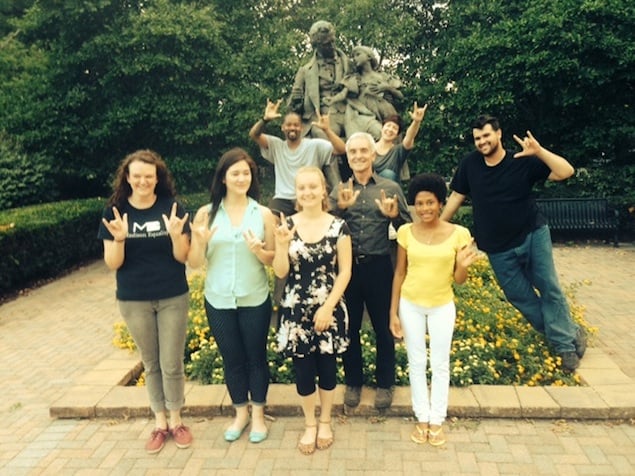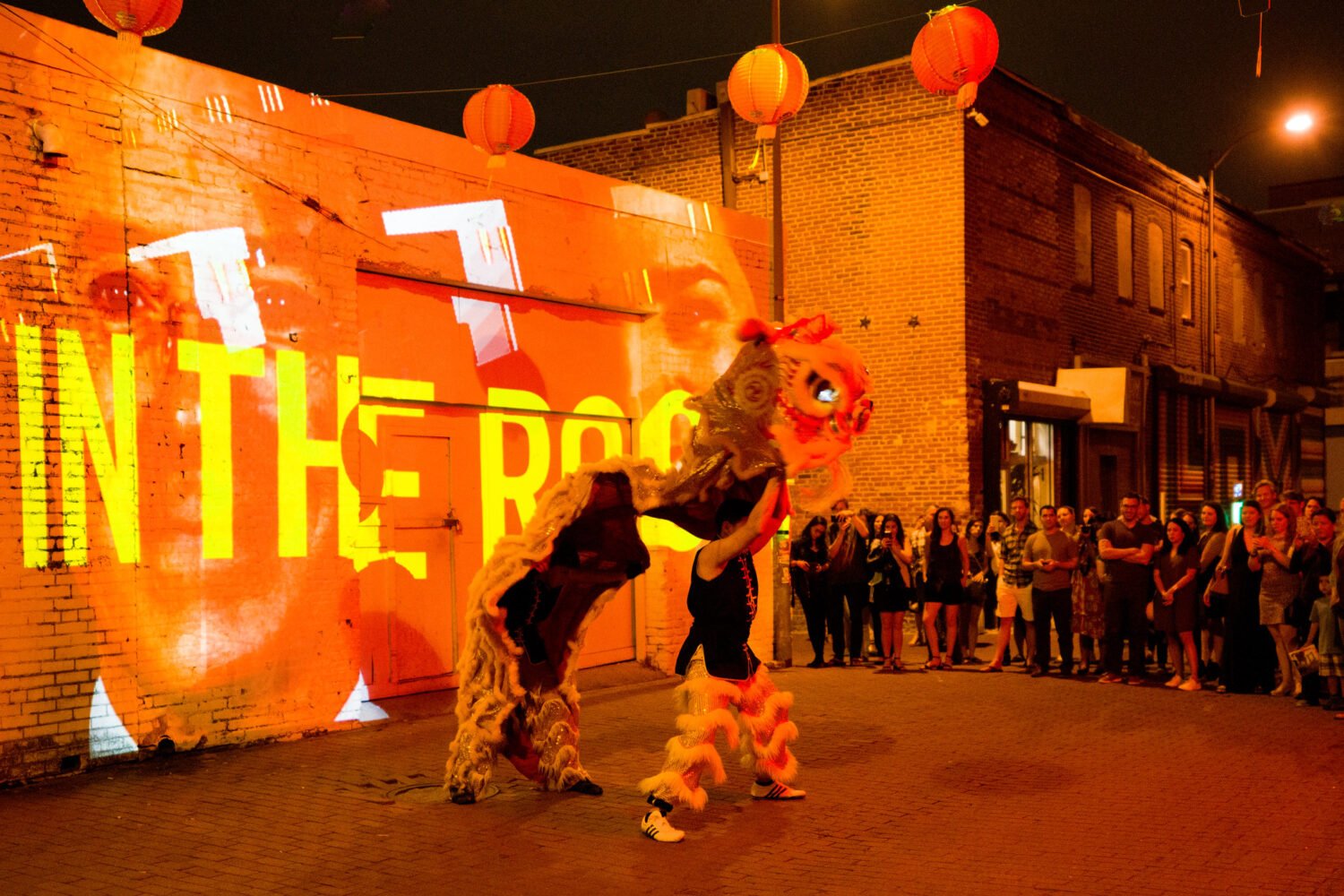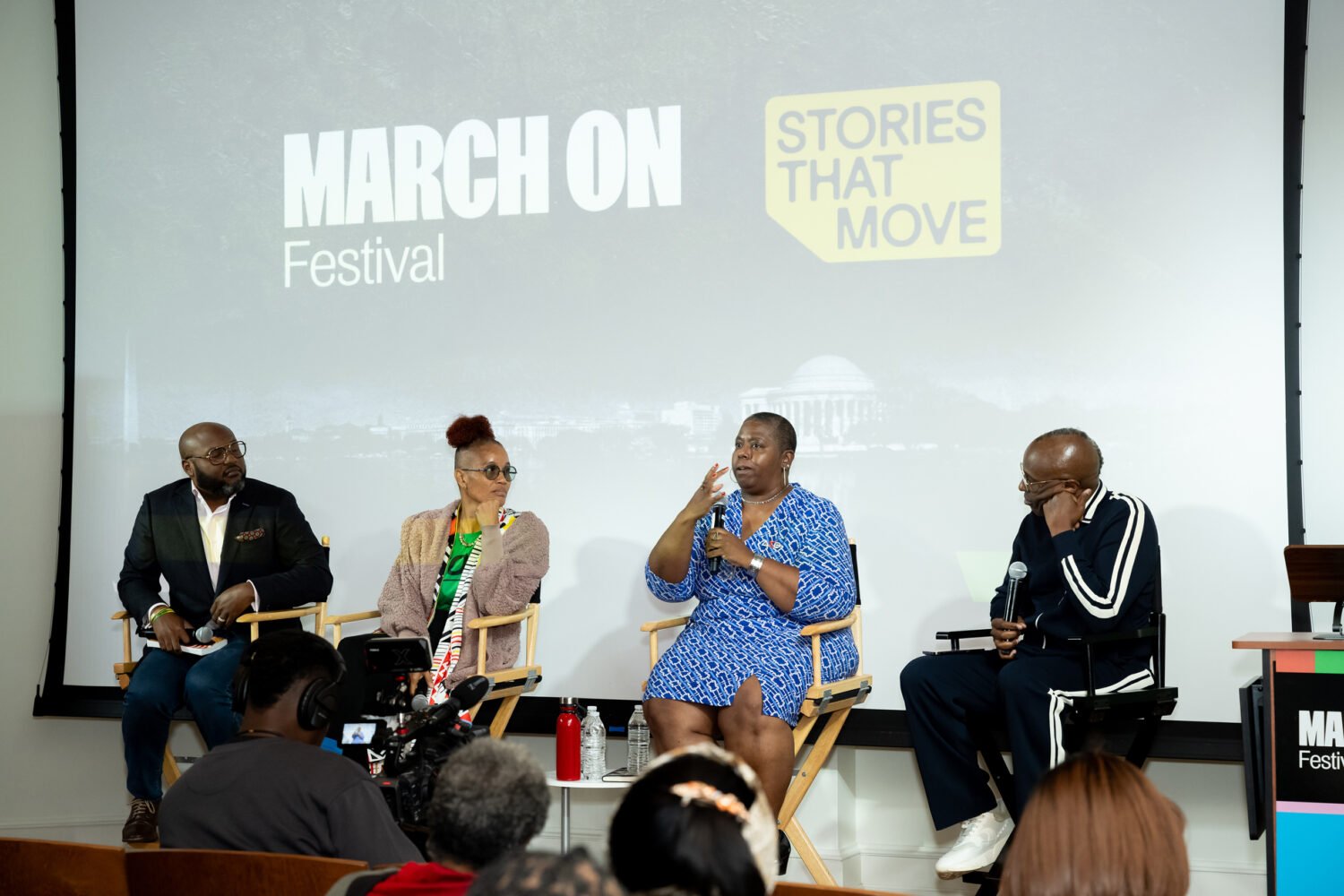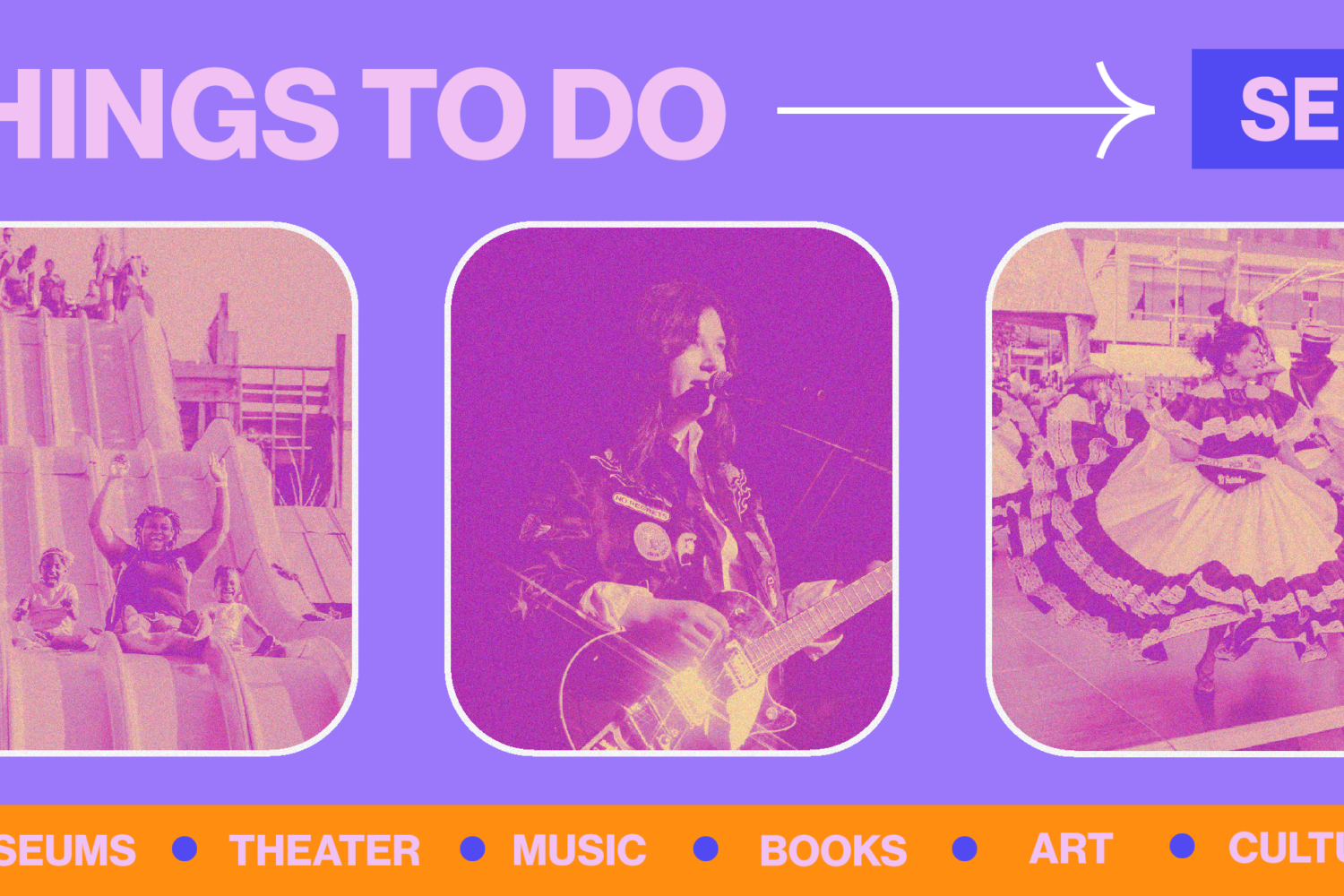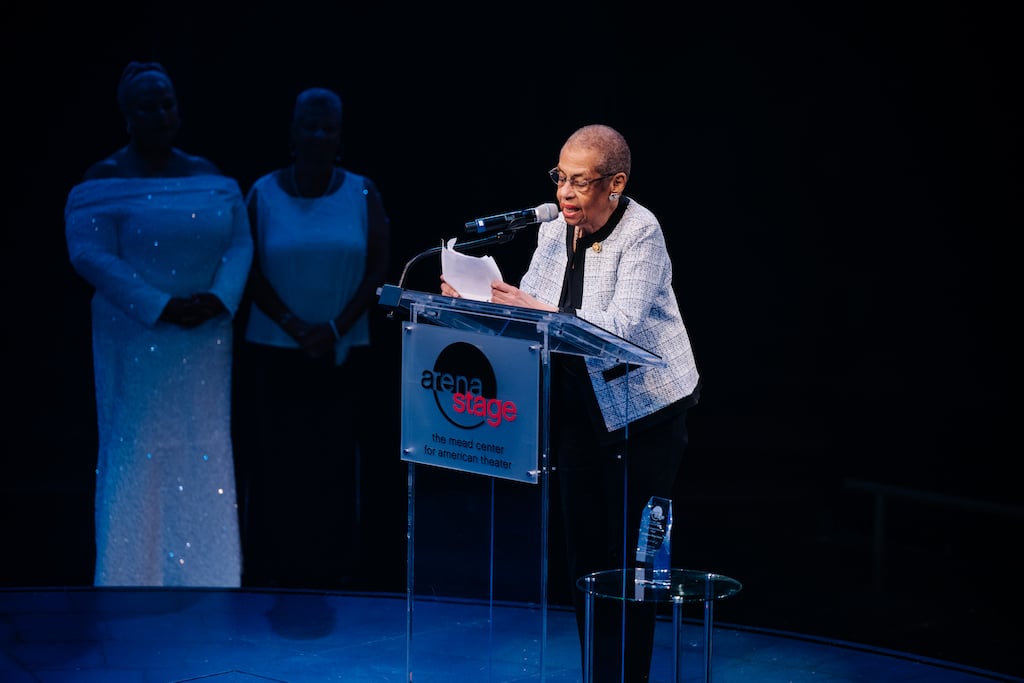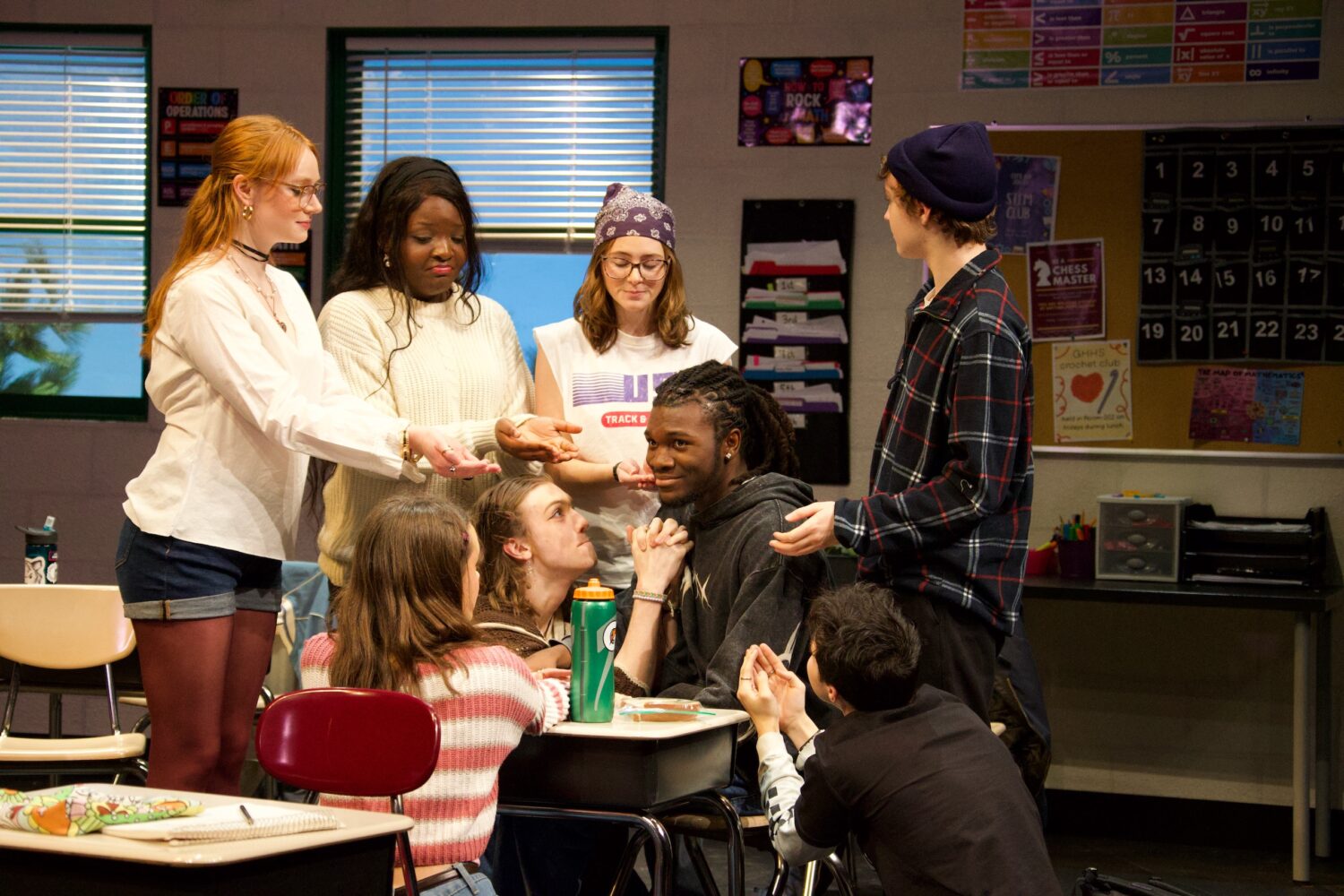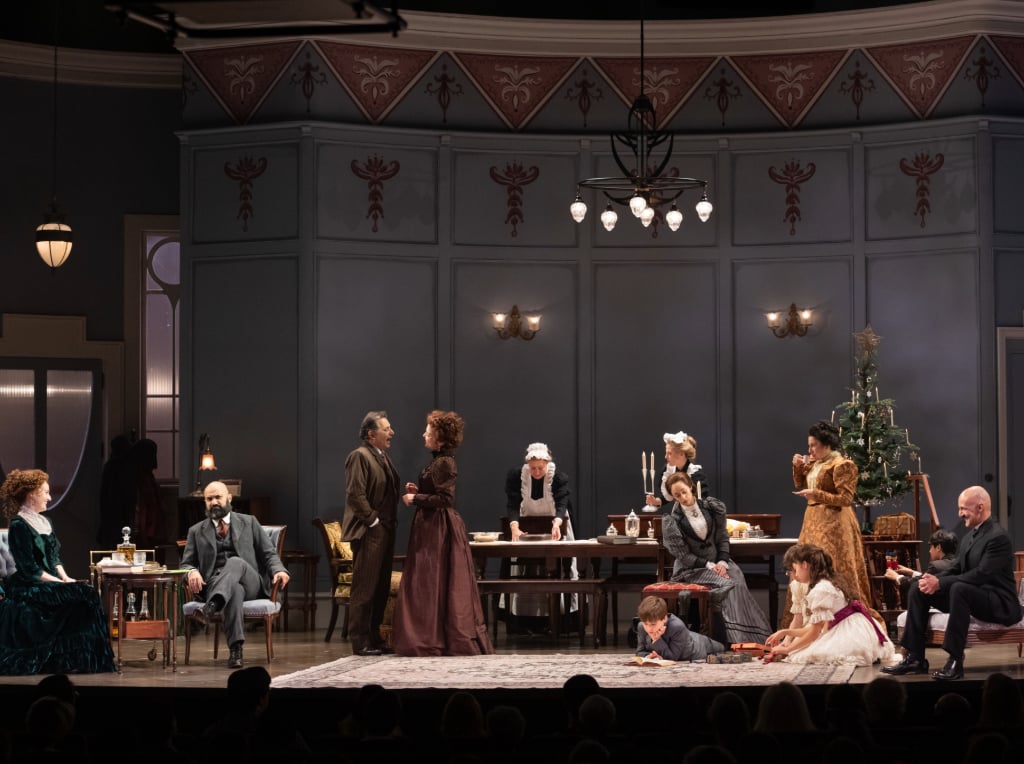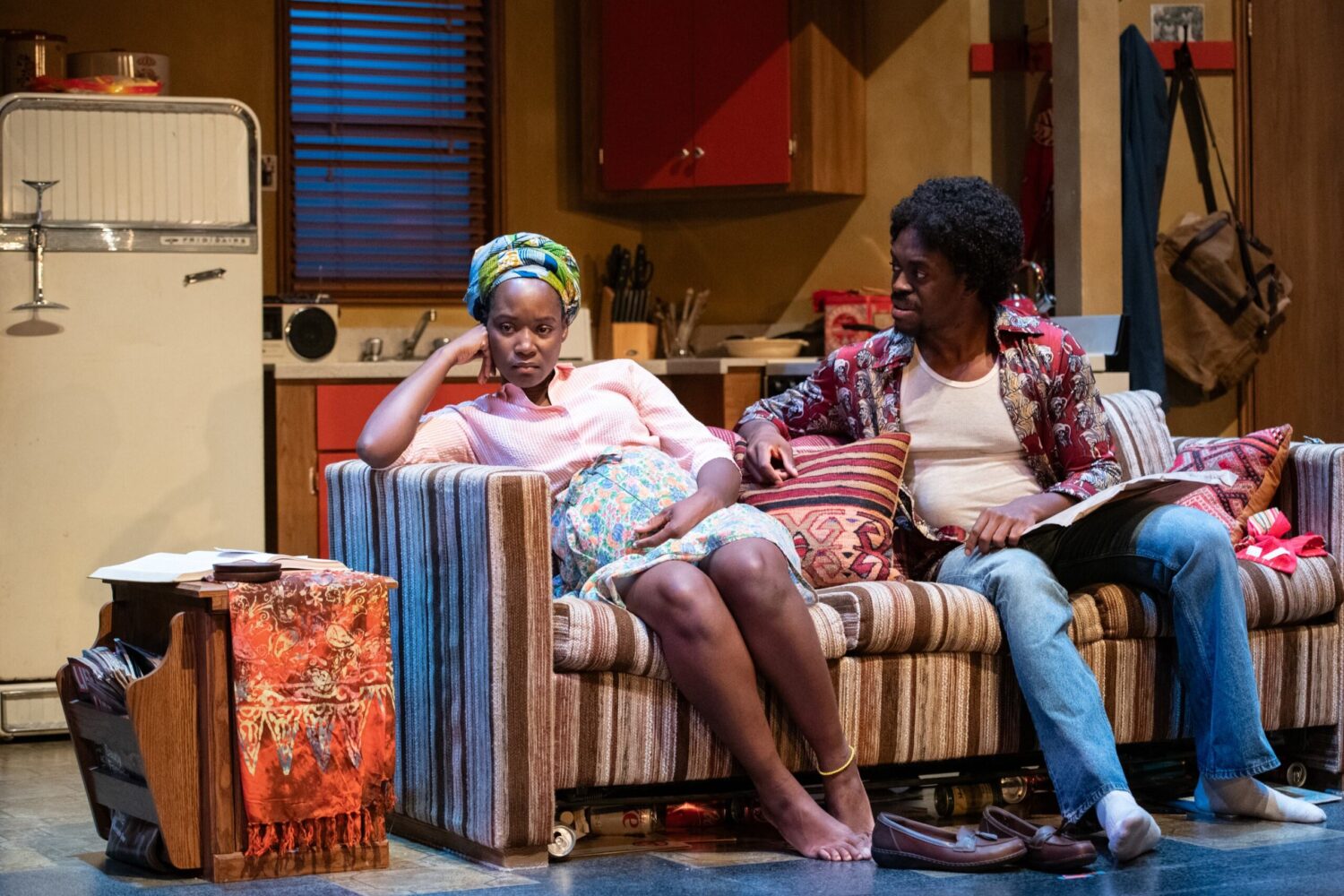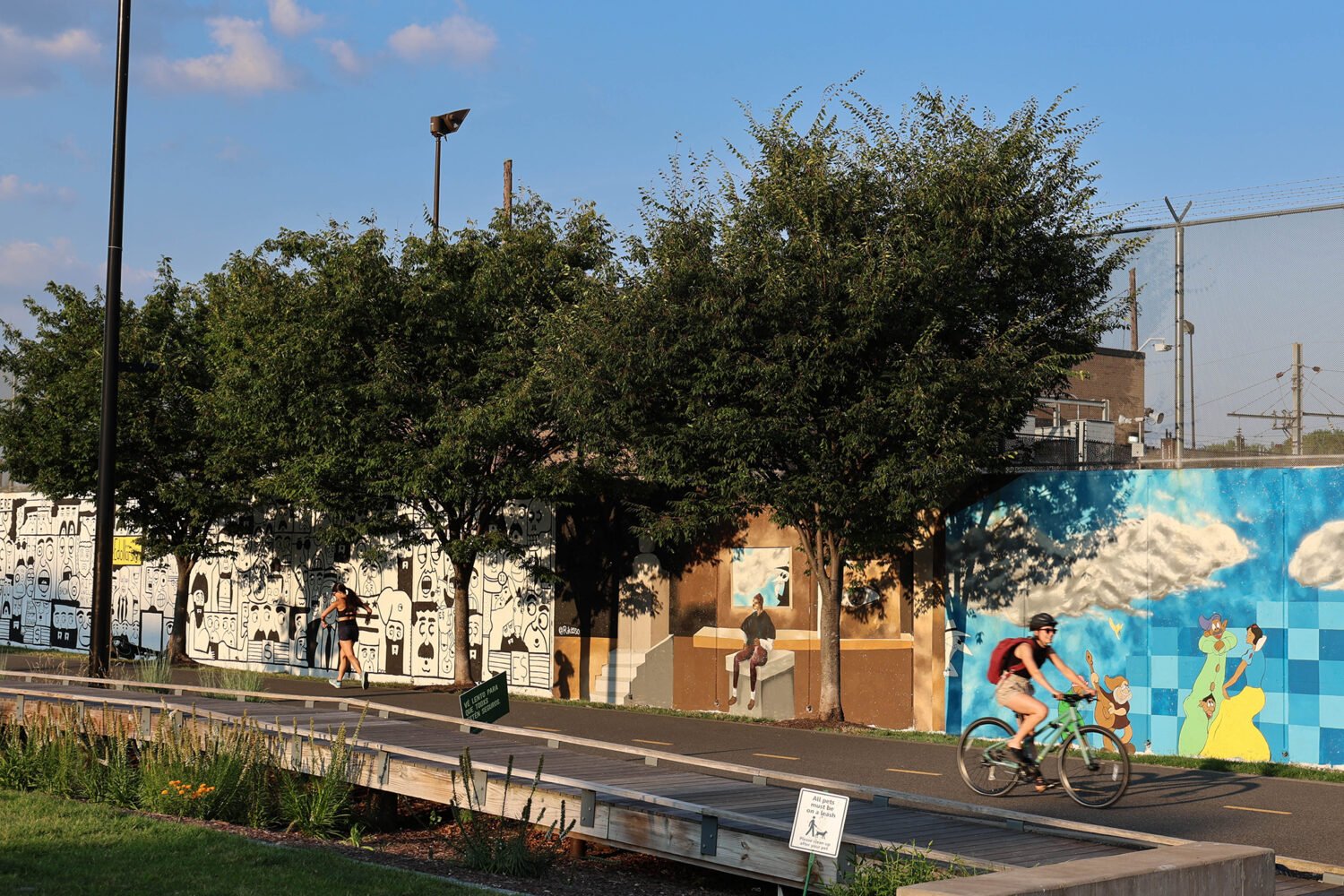In Mary Resing’s musical, Visible Language, when a deaf character makes a joke about learning to “curse out” his roommate, it’s likely not everyone in the audience will be laughing. Not because it isn’t funny, but because the line will only be presented in American Sign Language (ASL).
Visible Language, set to have its world premiere at Gallaudet University’s Eastman Studio Theatre on October 21, is the culmination of an idea Resing had five years ago to create a new kind of bilingual production. She had seen plenty of plays involving both deaf and hearing actors that opted for a simple, linear translation between ASL and English. This work, on the other hand, features “two slightly different storylines—one that the deaf audience will get, and one that the hearing audience will get,” she says. The aforementioned joke made by the deaf character will only be understood by the audience members versed in ASL; at other points in the play, the reverse will be true, so that when a hearing character speaks, the lines will not be interpreted into ASL.
“The idea was that very often in our culture, deaf people are left out of a joke when hearing people talk around them. In this case the roles were reversed,” says the show’s director, WSC Avant Bard’s Tom Prewitt. (The show is a co-production between the company and the university’s theater and dance program.) When there is interpretation, Resing wanted it to be for a reason that relates to the storyline. The result is a play that is not only a unique take on bilingual theater, but that also lets hearing audiences experience the kind of language barrier the deaf community deals with regularly from living among the hearing.
The play, which commemorates Avant Bard’s 25th anniversary as well as the university’s 150th, includes a host of notable historical figures from the 1890s, such as university founder Edward Miner Gallaudet, Alexander Graham Bell, and Helen Keller. The plot addresses issues within the deaf community that are still relevant today, like the debate between Bell—who believed the deaf should assimilate into the hearing community through learning to lip-read and speak—and Gallaudet, who believed sign language was the best way for deaf people to attain maximum understanding when communicating and learning.
The audition process for the show took about two weeks. Candidates were evaluated on their acting and singing abilities, and hearing actors had to demonstrate their signing prowess. Since the vast majority of the characters sign, familiarity with ASL was a crucial factor in casting, though Prewitt says actors who had zero ASL experience were still considered for smaller parts, depending on how quickly they picked up signs during tryouts.
During one particular audition, two actors had made it smoothly through the monologue and song portion, and then were given the challenge of learning signed lines in a scene between Helen Keller and her teacher, Annie Sullivan. After 15 minutes of working with the deaf members of the show’s artistic team, along with interpreters, the two women were asked to perform the scene in ASL while exploring the emotional depth of the characters. Though both women had very little experience with sign language, they were able to make it through the scene with only a few hiccups, and got a sample of the challenges awaiting them if cast.
Rehearsals begin this week and will be held about six days a week for three to four hours a day. The process will not be an easy one, given how many elements must be incorporated. Along with singing, dancing, and acting, hearing actors will have rigorous training in ASL.
Then there’s the challenge of translating the lines in the first place, as the “structure of ASL is very different from the structure of English,” says Ethan Sinnott, co-producer and set designer of Visible Language. (An example: The sentence “I am going to school” in English becomes “School, I am going” in ASL, because the subject or verb moves to the beginning of the sentence.) Not to mention that ASL, like all languages, has evolved over the years, and since this production is a period piece, its artistic team has to translate the English lines into ASL that would have been used before the 1900s.
Despite all these wrinkles, Prewitt is excited to create a cohesive performance that he says will speak, in different ways, to all audience members. So while the first joke might go over your head, you won’t be left out for long.
Find more information about Visible Language on WSC Avant Bard’s website.

